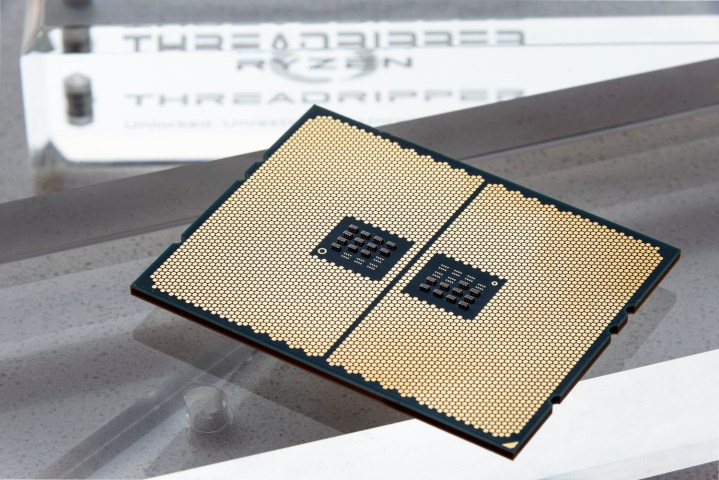
Although we’re still waiting for AMD to release new low-end second-generation Ryzen processors based on its refreshed 12nm Zen design (aka Zen+), AMD appears to be betting big on 2019. AMD said it would sample Epyc “Rome” chips with its 7nm Zen 2 design in the server market in late 2018, but mainstream processors based on that design won’t appear until next year. If current rumors are correct, those Ryzen 3000 Series chips will sport up to 16 cores.
According to reports stemming from Chinese forums, the new Zen 2 architecture provides 10 to 15 percent improved Instructions Per Cycle, meaning the design can handle more instructions than the previous design. The current Zen+ architecture sees a three percent Instructions Per Cycle increase over the original Zen design introduced in AMD’s first-generation Ryzen processors during 2017.
But the big news here is that AMD already finalized its Zen 2 design to support up to 16 cores in the mainstream market (AM4), up to 32 cores in the high-end enthusiast market (TR4), and up to 64 cores in the server market (SP3). For the mainstream and server markets, that is double the current maximum core count while the maximum Threadripper core count apparently remains unchanged.
The rumors dig a little deeper on a technical level, reporting that AMD actually finalized two Zen 2 designs. Both rely on how AMD groups its processor cores together into what it calls Core Complex, or CCX, that share the same cache. CCX are connected together using AMD’s Infinity Fabric on a single die.
In one Zen 2 design, AMD supposedly uses a CCX with six cores and pairs two CCX together on a single die, providing a maximum core count of 48 in a single processor. In another Zen 2 design, AMD uses a CCX with eight cores, and pairs two CCX together on a single die, providing a maximum core count of 64 in a single processor.
That’s a lot of tech talk, but it shows where AMD is heading with its third-generation Ryzen processors slated for 2019. The good news is that, technically, you won’t need to swap out motherboards to make way for the new chips, as AMD said the current processor seats/sockets will support all Ryzen and Epyc chips at least until 2020.
Of course, the arrival of new processors ushers in new motherboard chipsets that support all the new features in the latest CPUs. Cramming a third-generation Ryzen chip into a first-generation Ryzen motherboard won’t produce all the benefits and improvements introduced in the Zen 2 architecture.
Processors slated for a 2019 arrival will be the Ryzen 3000 “Matisse” Series for desktop (AM4), the Ryzen Threadripper 3000 “Castle Peak” Series for enthusiasts (TR4) and the Epic “Rome” chips for servers (SP3). A slide from AMD shows the company’s Zen 3 design is on track for 2020 although that will likely be toward the end of the year in samples dished out to servers. Mainstream and enthusiast products for 2020 may rely on a refreshed Zen 2 design based on the 7nm+ process node.
Editors' Recommendations
- Gigabyte just confirmed AMD’s Ryzen 9000 CPUs
- AMD Zen 5: Everything we know about AMD’s next-gen CPUs
- 4 CPUs you should buy instead of the AMD Ryzen 7 5800X3D
- Nice try, Intel, but AMD 3D V-Cache chips still win
- We have some good news about AMD’s next massive CPU launch



